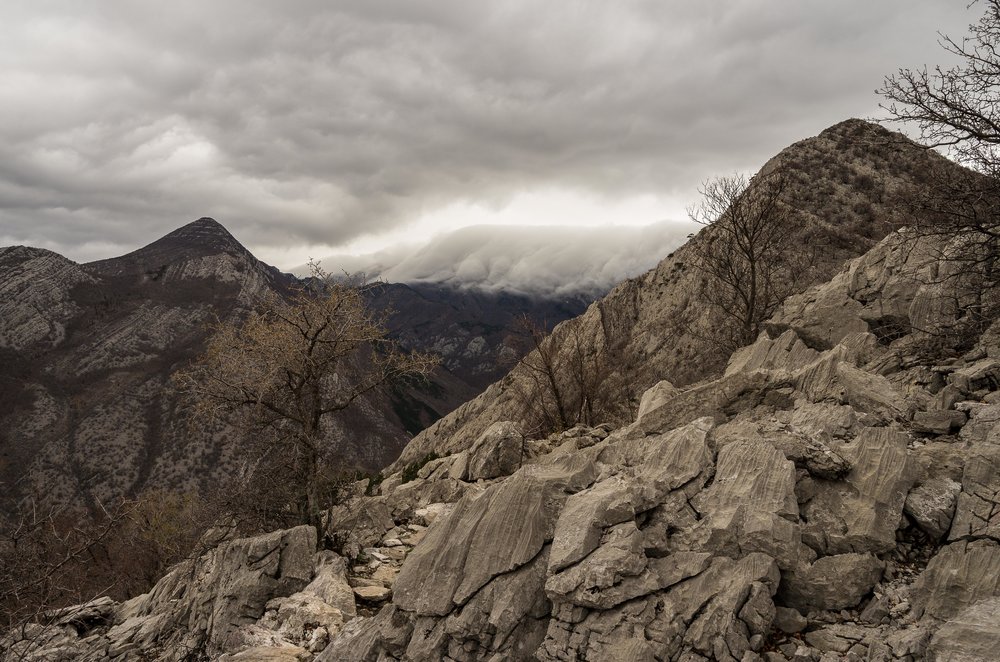
The East Side of the Velika Paklenica Valley
My first article on the Paklenica National Park in Croatia, which I visited in the winter of 2015 to 2016, described my travels in the Velika Paklenica river gorge and valley. Walking up and down the main trail, I was curious to see where the secondary paths up the east and west sides of the valley led to. This article describes my exploration of the east side of the valley and a third describes that of the west side. I used the Leica X Vario carried around my neck as my rucksack was filled with the equipment and food I needed for a winter walk in the mountains. To illustrate the article, I have used photos taken from two trips when the weather conditions were different.
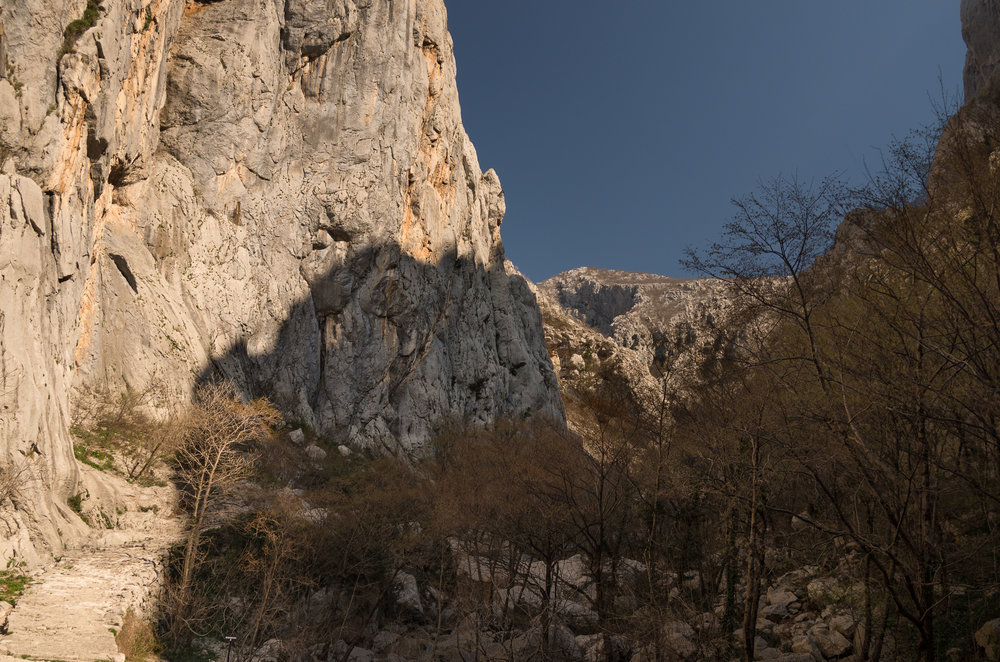
Although it is feasible to enter the park from several points, I always chose the main entrance near Starigrad. Parking in the main car park alongside the river, I made (slogged) my way up the gorge, passing Tito’s bunker and, occasionally, rock climbers attempting one of the many routes in the gorge. As I grew accustomed to the walk up the gorge, my bottom-to-top time gradually shortened.
Reaching the top of the gorge, I passed into the valley alongside the meadow and then turned east, following the sign to the Grabove Doline area of the plateau above. I planned to follow the trail across the hills, using the map and the trail markings, to the hut operated by the Paklenica Mountaineering Association in daylight before returning down the valley to the car. To return at night was not problematic as the trail was well kept and I had strong torches and spare batteries. The path passed gently through the woods and crossed the river where climbers rested, but very soon began its zig-zag up the steep side of the valley.
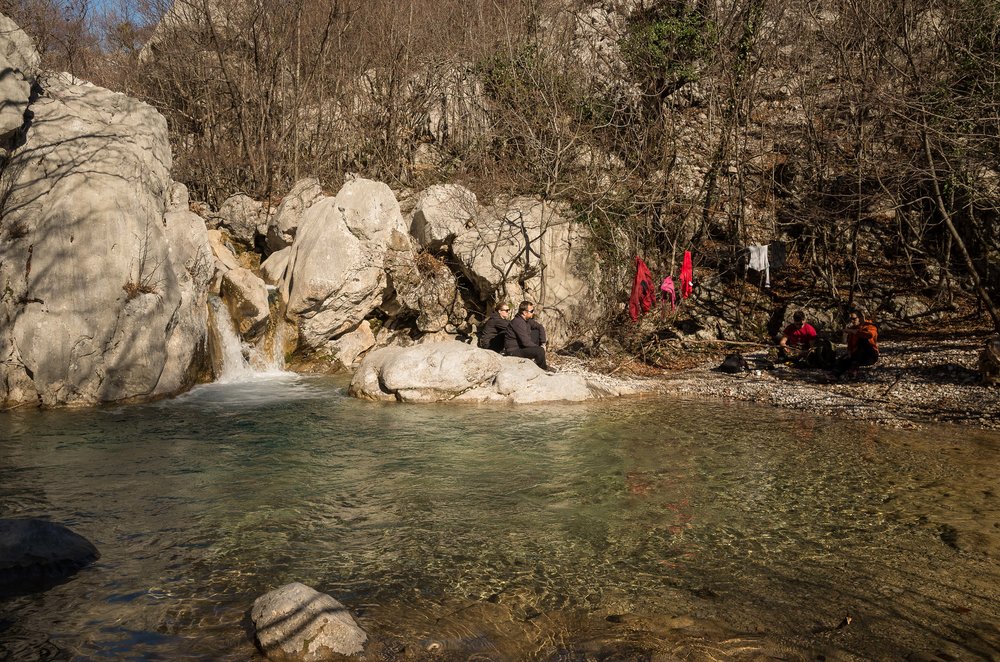
With aching muscles, I frequently stopped to examine the views for suitable compositions. As I climbed higher, I could see the coastal islands and the sea. Another reason for stopping, however, was to get out of the way of the sure-footed packhorses carefully picking their way down the trail, having made their deliveries to the isolated farmhouses on the plateau above.
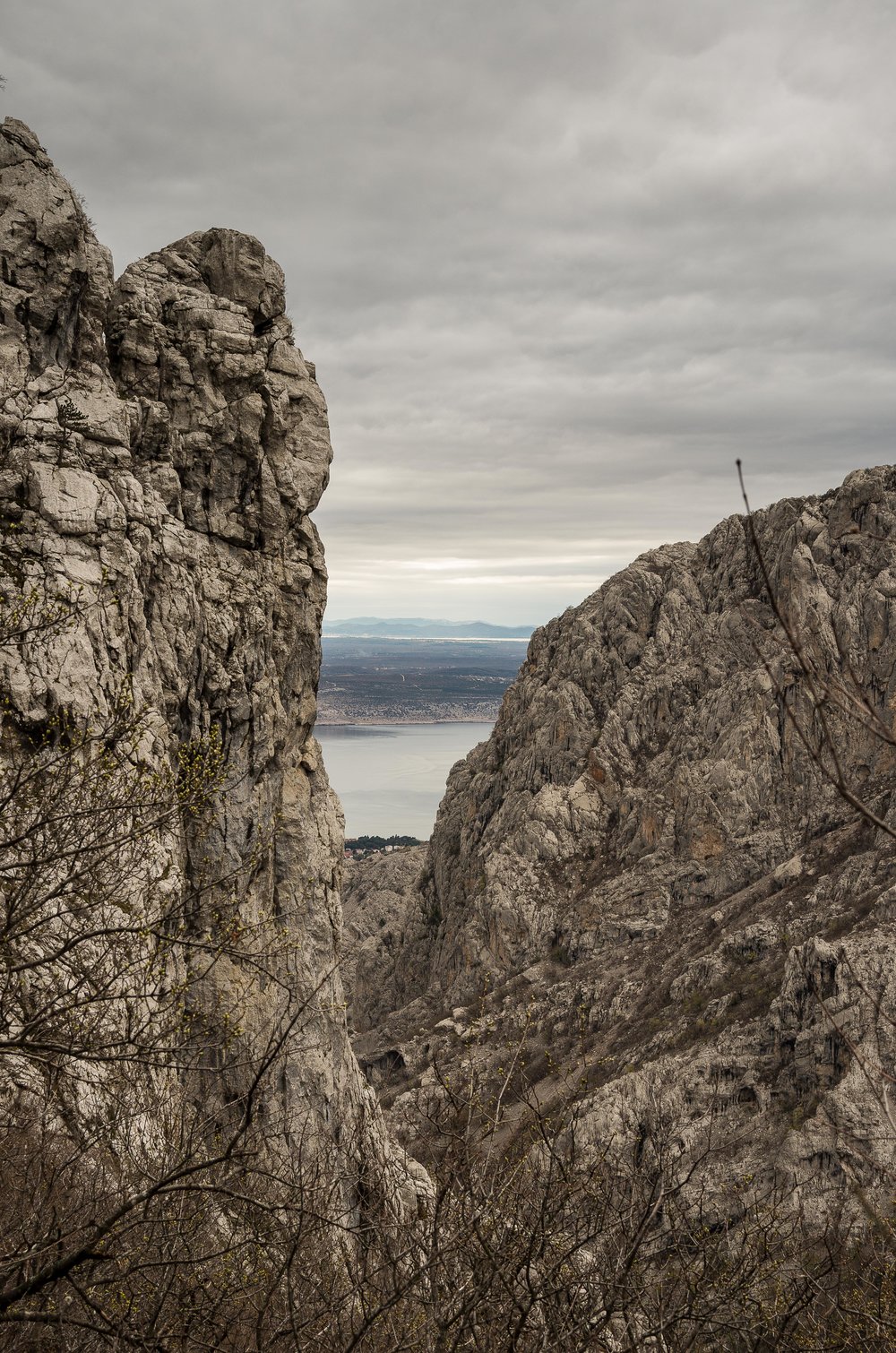
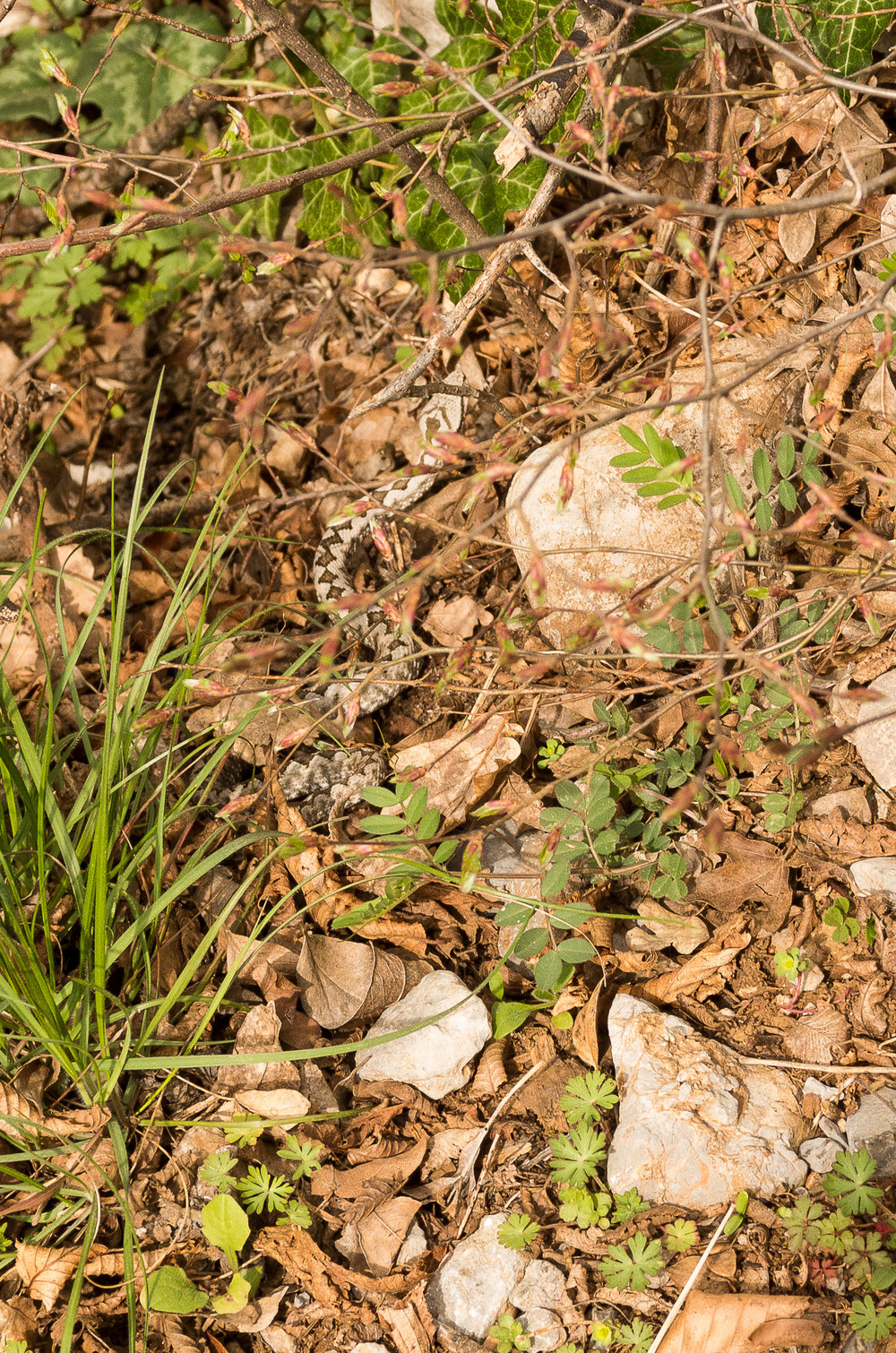
As I ascended, a movement in the bushes caught my eye, and it didn’t take long for the diamonds on the back of a horned viper to become clear. Using the zoom on the X Vario and chimping at the rear screen, I could see the tiny horn on the snake’s head. I judged it to be a baby and, while intrigued by it, I was mindful that there might be others in the area. When it turned around to come in my direction, I decided to push on up the steep side of the valley rather than pushing my luck.
Shortly afterwards, I met a group of girls out on a hike and told them I’d seen a snake further down the trail but that I wasn’t overly concerned as it was just a baby. “Oh no, they’re the most dangerous!” came the somewhat unsettling reply. The girl went on to explain that adult snakes, to conserve their venom, moderate their bites to inject only what they think is enough to kill the prey at hand (so to speak). I also understand that snakes will sometimes even ‘dry bite’ when no venom is injected.
The baby ones, however, not having learnt to vary the amount of venom they inject, give everything they have. I discovered something new that day. My engineer’s mind started to ruminate on the volume that would be injected by a baby snake versus a moderated amount from an adult and the damage that would be caused, but I gave up on that somewhat esoteric (and very discomforting) train of thought and kept on upwards with my eyes open.
Towards the top of the trail, between the hills of Krivi Kuk and Jurasova Glavica the views did open up, and I could see the main path in the valley far below. Stopping for lunch once I’d reached the Grabove Doline area, I was struck by its rockiness and how little in the way of pasture it offered. I could see where rainwater had collected in small ponds between the rocks but the lack of water in the summers, in the absence of a spring, must have severely limited the productivity of the place. I had a quick look at the farmhouses at Jurline and Škiljići before continuing on the trail.
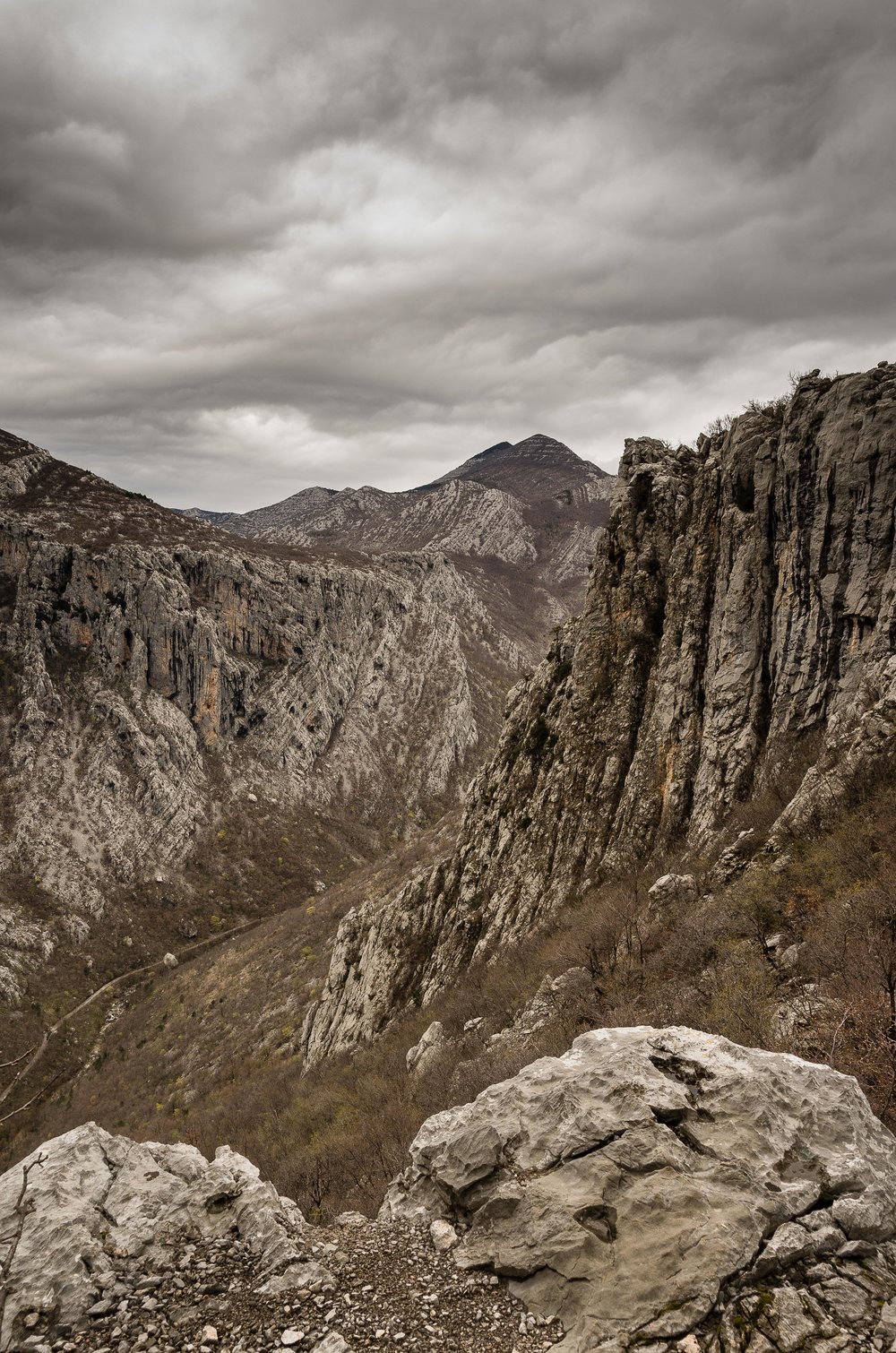
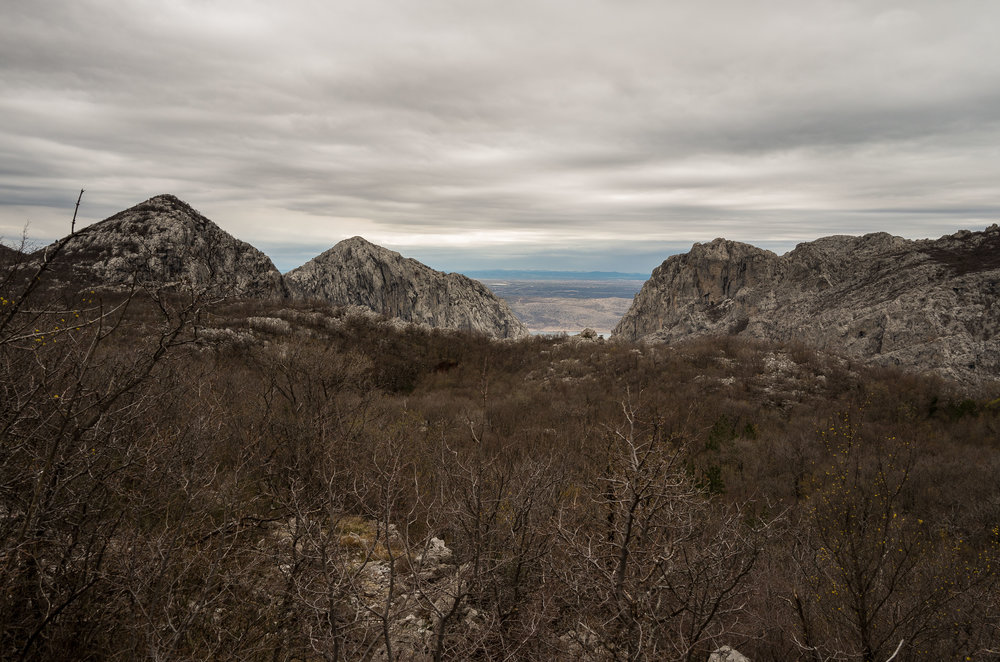
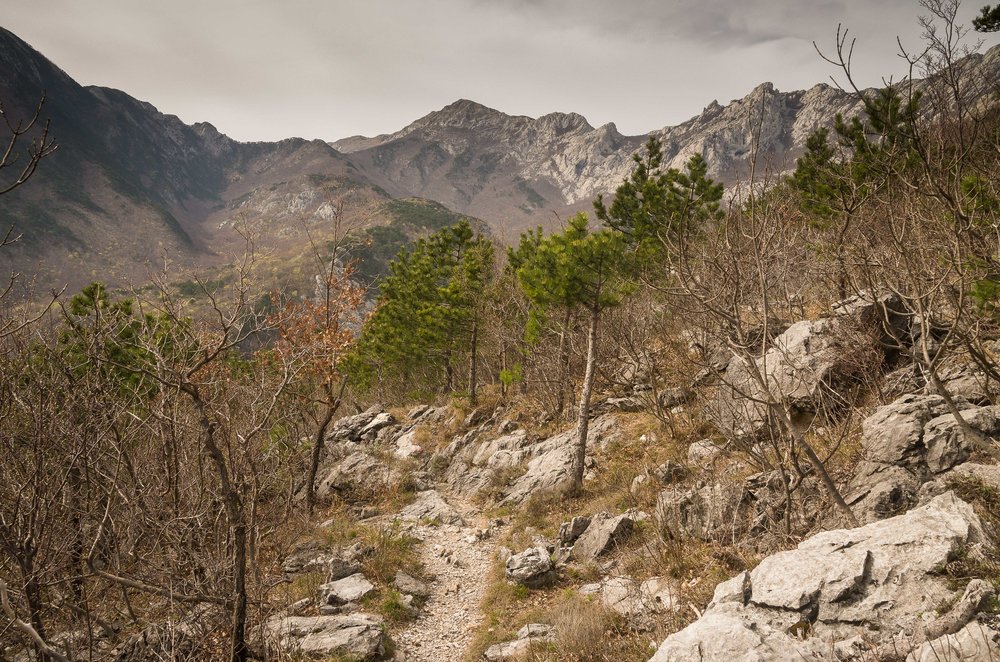
Leaving the plateau, I followed the rocky trail as it skirted the hills, shown in the first photo in the article, and I was relieved to see that the ground levelled out as the path went north through the woods. I was perturbed, however, when I saw clouds rolling over the Velebit mountains. I could foresee a storm coming which could have made the trail finding and descent to the hut more challenging. This area of the Adriatic is known for the fierce storms which descend suddenly from the Velebit mountains, but fortunately, the storm did not materialise. The Paklenica park had again exposed an elemental, threatening, character.
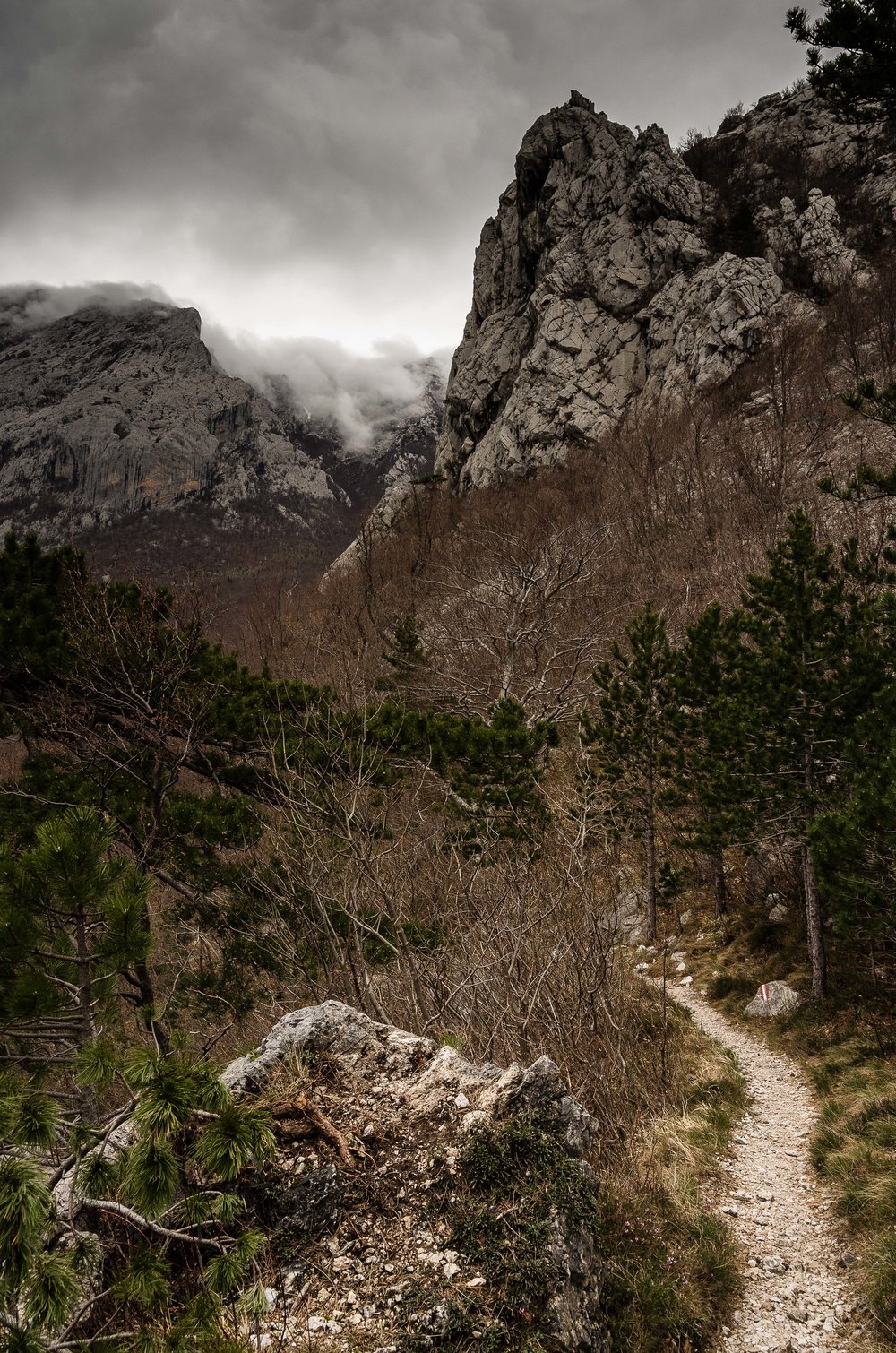
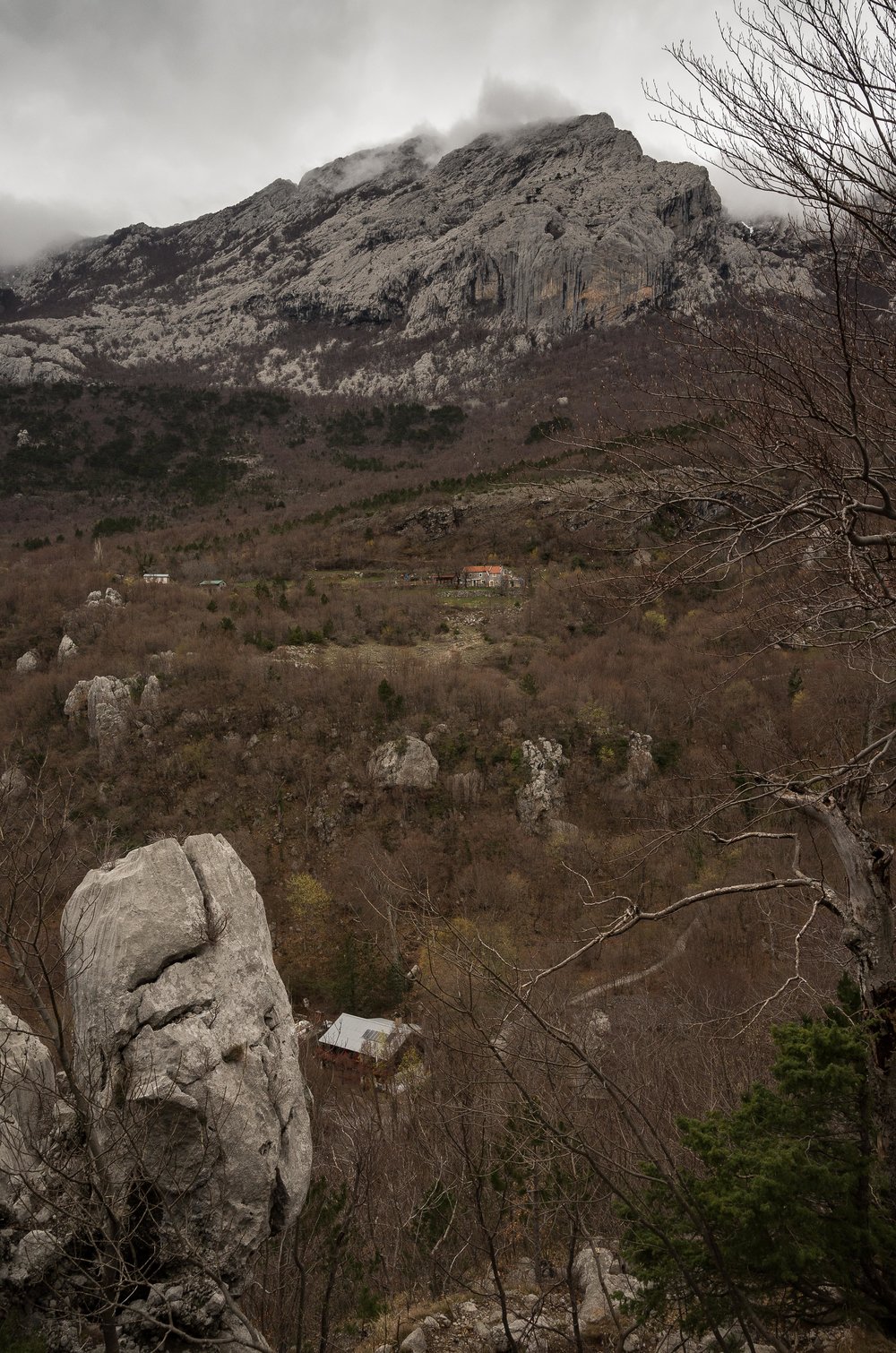
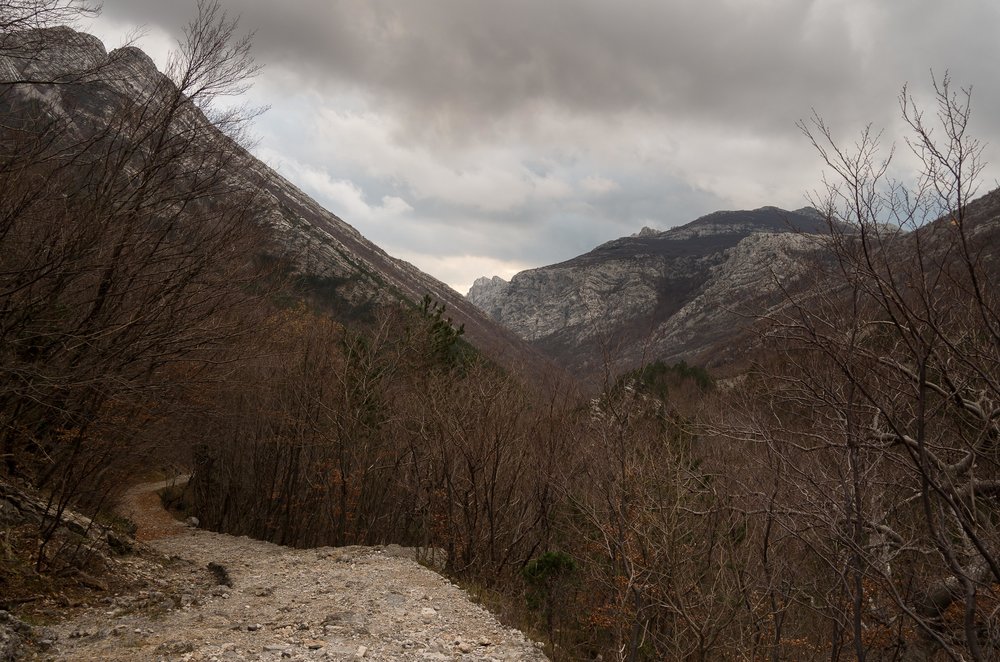
After following the trail down to the Paklenica hut, I was able to relax over cups of their fruit tea and then start the long walk down the valley and the steep gorge back to the car to start the drive back to my base at the Plitvice Lakes.
RELATED ARTICLES
Croatia with the Leica X Vario: Velika Paklenica Gorge and Valley

Think you should get a medal from Mr. Fagan of St. Patrick for your snake companions, the view looking down the trail is breathtaking, and I’m not sure I would stay in that hut under that rock formation. Seriously really enjoy your XV journey. Thank you!
Thanks John, Glad you like them. Kevin
Your images have such a tangible presence! I feel I could walk into any one of them (and even get bitten!) There’s a real marriage here of your vision and your camera.
Thanks John, much appreciated! Kevin
Hi Kevin, A nice story with some wonderful images from the X Vario. You now have me thinking about how much venom a baby horned viper will inject, and hoping a fully grown human would survive the experience. I look forward to hearing more from your Croatian journals. Dave
Thanks Dave, it is an unusual train of thought! Glad you like the images. Kevin